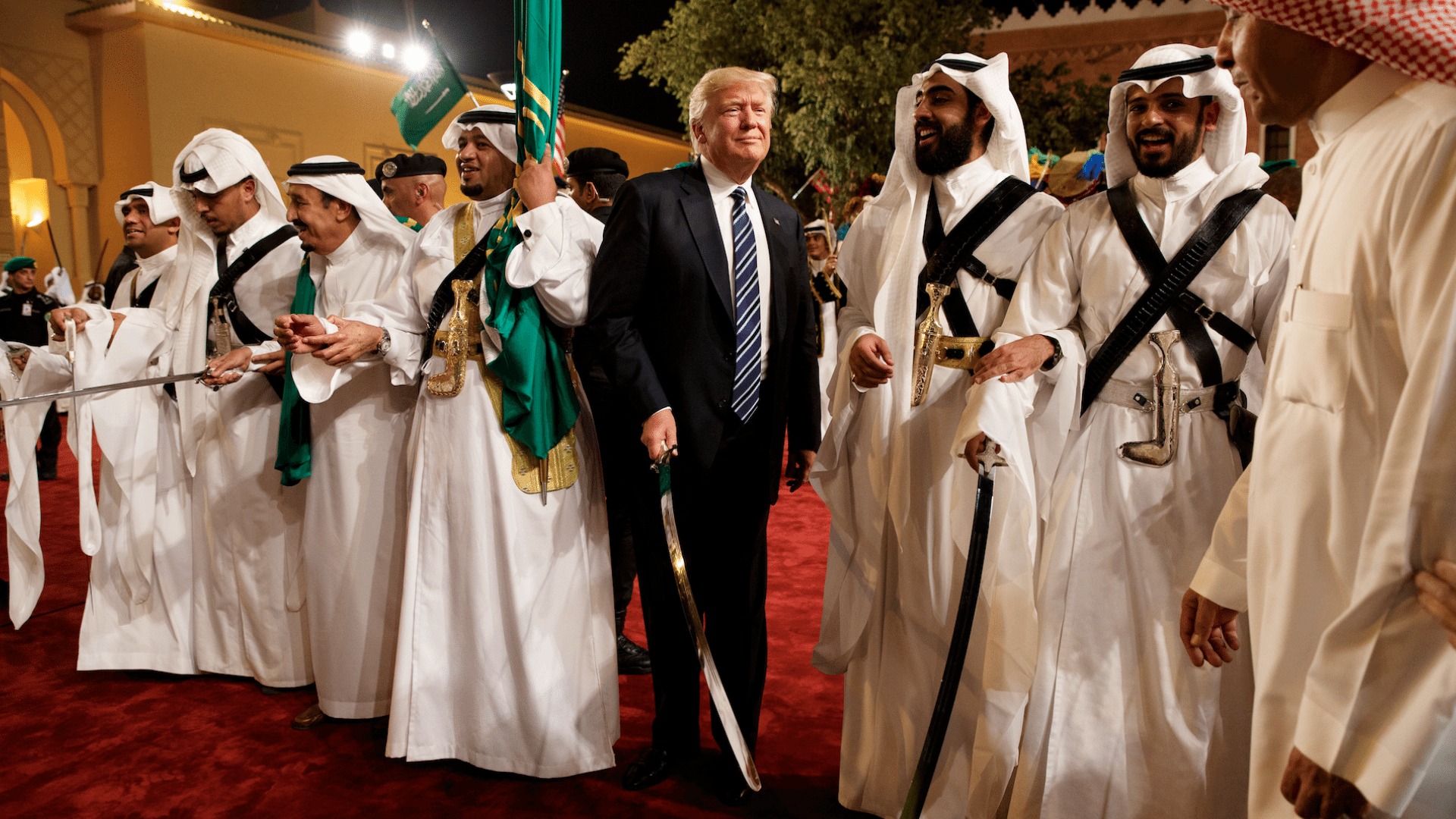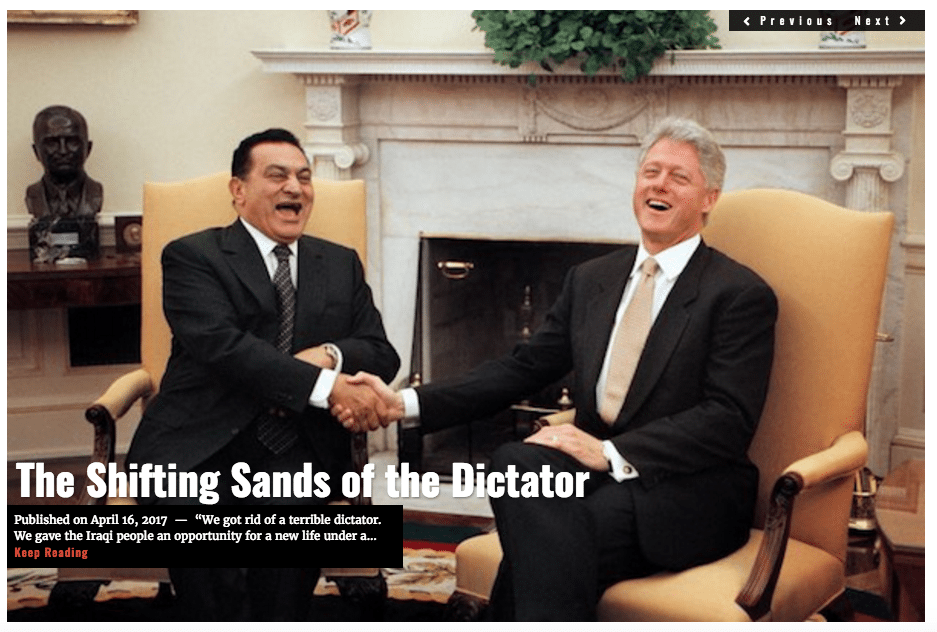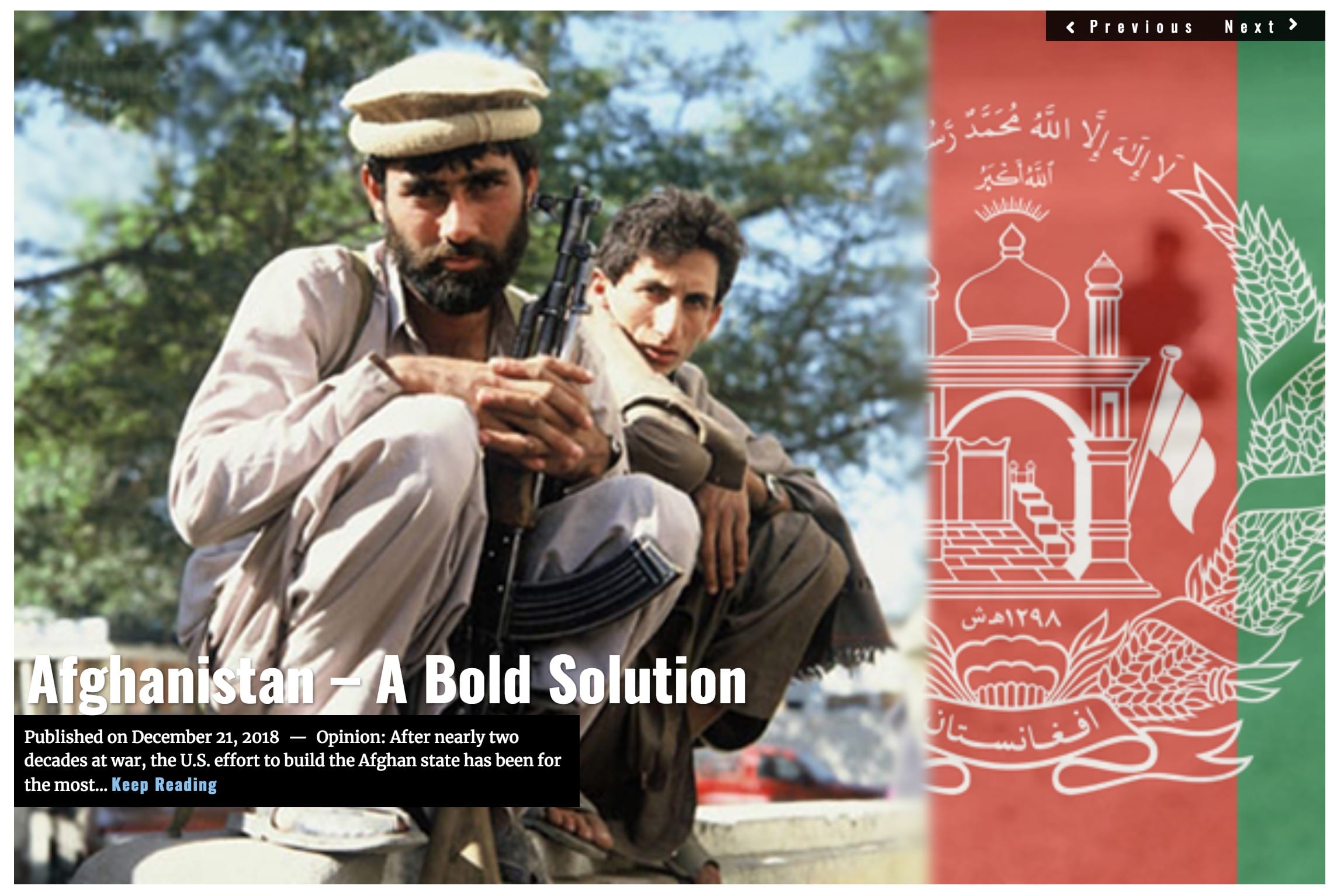OPINION: Establishing a grand Arab peacekeeping force is a seductive idea. An “Arab NATO” consisting of Saudi Arabia, UAE, Kuwait, Bahrain, Oman, Qatar, Egypt and Jordan has been proposed. As the thinking goes, Arabs understand one another, speak the same tongue, and all abhor the notion of foreign troops on their soil. But is the “Arab world” ready to make it work?
Majid Khadduri, the renowned Iraqi historian, once opined that nothing divides the Arabs as much as the question of unity. It pretty well sums up attempts by Arab and outside powers to forge a workable union of Arab states. That particularly applies to the efforts to create unified military forces. A number of efforts over the years have been tried, a few with temporary success, but none with any degree of permanence.
Arab NATO – An Unworkable Concept
Despite this history, the Trump administration has suggested building an “Arab NATO” to replace the American troops still involved in Syria and Iraq. This Arab force would replace the defunct “Free Syrian Army” (FSA). The latter organization, established in 2011 by mostly Sunni Syrian army officers as they defected from the Assad regime, was supported by the Western powers, including the Obama administration and the Gulf Arab states. Eventually the Syrian army of the Assad regime destroyed the FSA. To continue the war against the Islamic State, and establish a counterweight to the equally savage Assad regime, this solution has a nice political ring to it.
But it is totally impractical.
The response of most Middle East analysts to the suggested Arab coalition army has been negative, and sometimes tinged with ridicule. No one predicts any chance of success. Ironically, some of the same Middle East institutional wisdom that has lauded Arab unity over the years is now most critical of the Arab coalition idea. Most cite the vagaries of Arab politics and a lack of incentives to risk involvement. Yet in essence it is far more fundamental.
If the Arab peacekeeping concept fails, the Trump administration will have tread the same path of most distinguished Arabophiles and experts of the British Empire between the World Wars. They too thought that Arab unity was feasible.

A Tower of Babel
Any attempt to build an Arab unity institution is based on a shaky foundation. The mistake is assuming there is an “Arab world”. Conventional wisdom holds that the “Arab world” is united by a common language and heritage. Neither is true. The people inhabiting the region stretching across the African and Asian continent from Mauretania to Iran speak various versions of Arabic, but they are not uniformly mutually intelligible. Sociolinguists point out that there are 35 distinct dialects. My own experience in the “Arab world” has borne out the language difficulties of using a common Arabic.
In Tunisia, I was able to pass myself off as Lebanese with my far from fluent Levantine street Arabic. When serving with Arab soldiers in the Gulf and meeting Bedouins of the interior, I had to talk to the locals interpreted by soldiers using what was then called “soldier Arabic” – a sort of pidgin Arabic consisting of a vocabulary composed of various south Asian languages and Gulf Arabic called Khaliji.
Further complicating matters is the various levels of Arabic, i.e. classical Arabic of the Qur’an, the modern standard Arabic of newspapers and magazines, and the various colloquial dialects of the people. The Qur’an Arabic is written only and not spoken. Only the educated people can read it, and despite the oft-heard statement that the Qur’an is a unifying factor, it is disputed by the endless varieties of Islam that create conflict in interpretation. A recent indication of this is the literal interpretation of the Islamic doctrine motivating the Islamist forces in Iraq and Syria to enslave non-Muslims and kill Muslims they deem apostates – particularly the Shi’a of Iraq and Alawis of Syria.
An attempt was made to unify the “Arab world” by the implementation of a standardized Arabic called Modern Standard Arabic (MSA). It became the language of newspapers, periodicals, and news commentators on television. More recently, however, it has declined in usage. Arab media and politicians found that using MSA limited their audience. A more simple and very important reason for the decline in quality and use of Arabic, of both the local and MSA variety, is simply the difficulty of learning Arabic.
This seems dichotomous because, as Raphael Patai posits in his seminal study of the Arab personality, The Arab Mind, the animated and voluble Arabs love their language and admire those who speak it well. However, this love might be blinding, and is a symptom of a wider affliction. The Arab/Islamic world stagnated long before Napoleon invaded Egypt, and both East and West were shocked by the ease of his conquest. It exposed a civilization which had been content to rest on its laurels, as described by the renowned scholar of Middle East history, Bernard Lewis.
As the West surged ahead in technology and science creating a vocabulary to exchange ideas and to capture the intellectual processes, the Arabic language receded into a deep sleep and has not adapted well to science and technology. It remains ill suited to the special technological vocabulary required, and half-hearted attempts to create a technological vocabulary in Arabic have never taken root.
Conventional wisdom holds that the “Arab world” is united by a “common language and heritage.”
Neither is true.
The Shared Heritage Myth
The oft-heard narrative of the “Arab world” generally includes verbiage that points out “shared heritage.” That is also more myth than reality. The history of Egypt or North Africa has very little in common with that of Levant or Iraq. The days of the “Arab Kingdom,” which lasted from about 661 to 750 A.D., is the only era in which a truly Arab political union existed. At the time of the great Arab conquests most of what is now the “Arab world” was not Muslim. The Abbasid dynasty that followed the Arab Kingdom was more multicultural and came into existence, at least in part, as rebellion against the Arab exclusivity and exclusion of the Muwali (the non Arab converts to Islam).
The Ottoman Empire that followed the fall of the Abbasid Empire was a distinctly Islamic empire constituting what anthropologist Carleton Coon, in his seminal study Caravan, described as a “mosaic” of people. The Ottoman Sultan ruled over a pastiche of peoples, religions and sects. People were divided by religion, not race or nationality. The major groups, Christians, Jews and Muslims, by practicing fealty to the Ottoman Sultan, lived more or less independently within their religious communities – called Millets. Jews and Christians were distinctly second-class citizens, but understanding their subordinated position in political life, they generally were able to live peacefully and, sometimes, thrive within the Ottoman Empire. Religion came to define the economic mosaic system based on religious doctrine and traditional culture. For example, Christians were often barbers or butchers, and Jews were a critical element in business and finance.
Into this rough, but seemingly medieval economic system, the Europeans introduced the ideology of nationalism. The Ottoman Empire, widely considered the last Islamic Empire, splintered into nations, hurried along by various European powers. Unfortunately the concomitant ideas of democracy and individual freedom did not take root. The non-Arabs or non-Muslims were suddenly outsiders in their own homelands where they had lived for centuries.
![Image [Napoleon crushes the Mamluk army in 1798. The shock caused the Islamic world to start modernising. FINE ART IMAGES/HERITAGE IMAGES]](https://limacharlienews.com/wp-content/uploads/2018/12/Napoleon-Ottoman-Empire.jpg)
A development directly related to the intrusion of Western ideology into the Arab world became known as Arabism or Arab nationalism. The problem was that many peoples within the Arab world wanted no part of Arab nationalism. This was not just most Christians, Jews and Kurds, but also most Shi’a Arabs. In fact most Arabs, enthusiasts and detractors, see Arab nationalism as Sunni Arab nationalism. It did not unify Arabs – it further divided them.
A critical pillar of this Arab unity dream was the establishment of the Arab League in 1946 under the leadership of King Farouk of Egypt. Farouk saw himself as replacing the ousted Sultan of the defunct Ottoman Empire. While the British government eyed the concept of Arab unity suspiciously, many British Middle East experts supported it wholeheartedly. As the British Middle East historian, Elizabeth Monroe wrote, “The idea of Arab unity between the Arabs of the former Ottoman Empire never died out.”
Most Sunni Arab elites were ebullient on the concept of Arab unity and enthusiastically welcomed the Arab League, but Mohamed Hussein Haykal, the highly respected Egyptian journalist and historian, questioned its usefulness from the beginning. He opined that not only would political differences be an obstacle but also the fact that history, legal codes, agriculture, and industry “are necessarily different in the different Arab states.”
Elie Kedourie, the distinguished Orientalist wrote, “Events have proved him [Haykal] right, and have shown the Arab League to be a system based on conflicting ambitions, and cemented with bitter mutual suspicions.” Kedourie believed that the Pact of the League “proved to be a device designed not so much to bring about Arab unity as to keep the so-called Arab states at arms length from one another.” It was another chimera producing what Lebanese writer Fouad Ajami called the “Dream Palace of the Arabs.”
The League failed to unite the Arabs politically, culturally, economically, or most importantly, militarily. It is the latter which graphically exposes the shaky structure of the whole idea of Arab unity, a prime example being the Arab States “peacekeeping” forces inside Lebanon.
The history of the Arab Deterrence Force (ADF) sent into Lebanon in 1976 to quell the bitter civil war between Christian militias and the Palestinian Liberation Organization (PLO) is a case study illustrating the ineffectiveness and dangers of this type of Arab operation. Although it was supposed to be a joint Arab force, the vast majority of the forces were Syrian and, as the Christians had assumed all along, the Syrians turned the peacekeeping operation into a permanent occupation of Lebanon. Entering Lebanon in 1976, they remained until 2005. It is a legitimate fear of Arab regimes that inviting brother Arab forces to assist in their defense will lead to permanent occupation.
Conventional wisdom among much of the Western Middle East scholarly community is that the greatest threat to stability in the Arab world was the creation of Israel. As one who lived in the Middle East for over eight years, I wish I had a dollar for every time I heard the phrase “Israel is a foreign body lodged in the heart of the Arab world.” Generations have been brought up to having this embedded in their worldview.
British historian Albert Hourani wrote that the primary issue confronting all Arabs was “Israel and the fate of the Palestinians.” Celebrated British adventurer and official Freya Stark repeatedly reminded the British government that the Palestinian issue was the one which undermined the British campaign to counter the very popular Arab-oriented fascist propaganda in the early days of World War II.
An Arab army is a double-edged sword.
Its primary mission is to protect the regime, not necessarily the nation.
An Arab Military Culture
Given the supposed universal and visceral hatred of the Israeli state, one would be moved to believe that in efforts to erase the “Zionist” state Arab unity would be at its zenith. But that has not been the case. Nothing has illustrated the disunity of the “Arab world” more than its efforts to destroy the Israeli state. This is despite the humiliation inflicted on over 400 million Arabs by just nine million Israelis (20% being Israeli Arabs) in four wars.
It must be plainly stated that the Arab lack of success has nothing to do with innate intelligence or courage. No nation or people have an earmark on that. Rather is it a function of a culture that, as the peerless Tunisian historian Ibn Khaldun wrote, promotes individuality in which every man wants to be the leader. “[T]here is scarcely one among them who would cede their power to another.”
It is still a largely tribal/clan oriented society in which a civil society has never taken root. Concentric circles of loyalty, in which only family, tribal or clan relatives are completely trusted, vitiate the trust in your fellow soldier.
So it is imperative that a proposed unified Arab force in Syria be examined in light of Arab unity efforts in their wars against Israel. First, however, there are some fundamental elements intrinsic to Arab military culture that must be understood.
– An Arab army is a double-edged sword. Its primary mission is to protect the regime, not necessarily the nation. Yet at the same time, the army presents the greatest threat to the regime.
– The land force threat to regimes by their militaries results in dual military organizations that act as a balancing force against one another. An example is the Royal Saudi Land Forces vs. the Saudi Arabia National Guard. This also produces intricate and fragmented chains of command, and very little if any central military direction.
1948 – The Arab-Israeli War
After realizing that the Arab irregulars sent against the Israeli settlers in 1948 were not up to the task of removing the Zionists from their new homeland, Arab commanders decided to hold a conference in April 1948 to hammer out agreed objectives, strategy, and command structure. This failed.
Heedless, Arab officials within the British Mandate for Palestine sent in their ill-prepared troops in response to mobs in the streets. Although full of bluster, Arab leaders did nothing to prepare their troops for combat operations. As would become commonplace, rhetoric was fulsome, but accompanied by very little action. The Jordanian general, Isma’il Safwat spent weeks in Damascus trying to work out some sort of coordinated plan for the Arab invasion, but as he recalled, “[a] swarm of Iraqi and Syrian officers buzzed around the building seemingly more familiar with the science of political intrigue than that of warfare.”
Distribution of funds and rank were the topics of intensive negotiation. In the end, the Arabs convinced themselves that it would be a cake walk and that the “Zionist” state would be dismantled. Predictably, the outcome was an abysmal defeat for the Arabs followed by many bitter recriminations. Gamal Abdel Nasser, an officer in the Egyptian army wrote, “[h]ere we are in these foxholes, surrounded, and thrust treacherously into a battle for which we were not made ready, our lives the playthings of greed, conspiracy, and lust which have left us here weaponless under fire.”
![Image [Arab-Israeli War 1948 - Edward J. Krasnoborski, Frank Martini, Department of History, U.S. Military Academy]](https://limacharlienews.com/wp-content/uploads/2018/12/Arab_Israeli_War.jpg)
1956 – The Second Arab-Israeli War (The Suez Crisis)
The “Tripartite War of Aggression,” as the Arabs call it, was launched against Egypt by Great Britain, France and Israel. The motive of the French and British was to retake possession of the Suez canal, recently nationalized by Abdul Nasser and, in so doing, remove Nasser from power. The Israeli objective was to punish Egypt for launching Palestinian terrorist raids across the border into Israel, and to reopen the Gulf of Aqaba which Nasser had closed.
While the Arab masses acclaimed the Egyptian seizure of the Canal, most Arab leaders saw it as a threat to their regimes, especially Iraq and Saudi Arabia. Nuri Sa’id, the Prime Minister of Egypt even urged the British government to get rid of Nasser.
The Syrian government formed a committee to aid Egypt and hosted a conference in Damascus. As before, rhetoric was heated, but action was negligible. It was, in fact, American objections to the operation that resulted in French, British and Israeli withdrawal. Once again Hussein Haykal summed it up writing, “everybody in the Arab World was acting on his own initiative: any attempt to coordinate strategy or tactics would have been impossible.” It did however spur an unfortunate and wholly unjustified enthusiasm among the masses for Nasser and Arab nationalism.
1967 – The Six-Day War
The 1967 war is a case study in why the instability of Arab regimes renders any durable Arab coalition unlikely at best.
I was a student at the American University of Beirut as the Palestinian liberation movement reached a crescendo of popularity both in the Arab press and in Western media. Arab regimes vied with one another to ingratiate themselves with the movement, while at the same time using it against their Arab neighbors and containing it within their own borders.
Nasser, using his immense popularity, pushed the envelope against Israel. He closed the Straits of Tiran to Israeli shipping while using vitriolic language of extermination against the Jewish state. While whipping up the crowds with his bellicosity and continuing to raise the stakes, Nasser was constantly taunted by state-run Syrian media. He was accused of hiding behind the United Nations and being a puppet of the United States.
The Egyptians, with massive amounts of new equipment from the Soviet Union, convinced themselves this war would be different. Despite the bloviation from the Arab States, no plans were made and no coordination was effected. Young King Hussein of Jordan was bullied into promising to open a second front against Israel and accept an Egyptian general to command his troops on the West Bank. Topping off the insult to the King, Nasser lied to him, claiming that the Egyptian air force was flying over Israel, knowing his air force had been totally destroyed.
![Image [After Israel seized East Jerusalem in 1967, its soldiers carried a confiscated portrait of King Hussein of Jordan. Credit: Leonard Freed / Magnum Photos]](https://limacharlienews.com/wp-content/uploads/2018/12/Israel-seized-East-Jerusalem-in-1967.jpg)
It should be noted that the Iraqis did not leave Jordan until 1970, and in the same year Syrians invaded Jordan to assist the beleaguered Palestinian rebels. As always, Arab mutual accusations were vociferous. The Palestinians accused the Arab League of selling them out and the Jordanian officers accused the Palestinians of “running like rabbits.”
1973 – The Yom Kippur War / Ramadan War / October War
In view of the previous hapless efforts to unify Arab forces, this war is the epitome of Arab coordination and unity. A point for consideration here, however, is that most of the credible histories of the war have been written by Israelis, and the Arab threat is perhaps a bit exaggerated.
The Arab nations provided at least token forces, and the Syrians and Egyptians did coordinate their strategy. But Sadat deliberately misled the Syrians, creating the impression that after crossing the Canal the Egyptians would push forward to the Sinai passes and follow with a further push into Israel. The Iraqis sent a force into Syria that actually stymied the Israeli drive toward Damascus. But they did not coordinate with the Syrians or the Jordanian brigade fighting alongside them. Having learned his lesson, King Hussein did not open a front along the Jordan River and sent only one armored brigade to fight in Syria. Even alongside their allies, however, they each fought their own war independently.
I recall being at a fact finding conference in Amman, Jordan, in 1974, where the Jordanian brigade commander complained that there was no means of communication with the Iraqis or Syrians.
![Image [Yom Kippur War - An Israeli soldier on a tank]](https://limacharlienews.com/wp-content/uploads/2018/12/E10PY3-e1545684348330.jpg)
History shows …
Having Arabs provide their own peacekeeping force is a seductive idea. As the thinking goes, they are all Arabs, they understand one another, speak the same tongue, and all abhor the notion of foreign troops on their soil. Domestically it avoids the tar pit of further American involvement in the Arab opaque glass menagerie. Or perhaps the West could adopt the policy of “benign neglect.”
There are many problems with disengagement, one being that these intra Arab wars have a history of spilling beyond their borders. This is particularly critical in view of the massive Arab/Muslim migration to the West. History has shown that these migrants carry their intra communal conflicts with them and assimilation, or even integration is uncertain.
The illusion of Arabism has given way to an even more dangerous mirage, the manichaeism of radical Islam. The “Islamic Revival” has added a new element of danger to the world. The notion of a world divided into a “house of war” and “a house of peace” presents a new totalitarian threat, not just to the Arab world, but to us all.
Most can agree that Arabs have to solve their own problems. Yet, from my vantage point, having followed nearly half a century of Arabs trends, I believe they are nowhere near the capability of doing so.
With power comes responsibility. And that is the role we have, like it or not.
Colonel (Ret.) Norvell DeAtkine, Lima Charlie News
[Subscribe to our newsletter for free and be the first to get Lima Charlie World updates delivered right to your inbox.]
U.S. Army Colonel (Ret.) Norvell DeAtkine spent nearly nine years of his 30-year military career in the Middle East as a military attache, student or political military officer. After retirement he taught for 18 years as the Middle East seminar director at the John F. Kennedy Special Warfare Center and School. Following his retirement from the JFK Center, Colonel DeAtkine held positions with the Defense Intelligence Agency, Iraqi Intelligence Cell and Marine Corps Cultural and Language Center. He has written a number of articles for various periodicals on primarily Middle Eastern military topics.
Lima Charlie provides global news, featuring insight & analysis by military veterans, intelligence professionals and foreign policy experts Worldwide.
For up-to-date news, please follow us on twitter at @LimaCharlieNews
In case you missed it:



![Image The Arabs - a "Manufactured" People? [Lima Charlie News]](https://limacharlienews.com/wp-content/uploads/2018/12/Arabs-A-Manufactured-People-Lima-Charlie-News.png)

![Image Drop in oil prices may trigger unintended consequences [Lima Charlie News]](https://limacharlienews.com/wp-content/uploads/2018/11/main_900-480x384.jpg)
![Image The Right Response to the Death of Jamal Khashoggi [Lima Charlie News]](https://limacharlienews.com/wp-content/uploads/2018/10/The-Right-Response-to-the-Death-of-Jamal-Khashoggi-Lima-Charlie-News-480x384.png)
![Image Welcome to Jordan! A Return of Hope and Dignity [Lima Charlie News]](https://limacharlienews.com/wp-content/uploads/2018/10/Welcome-to-Jordan-480x384.png)




![Blossoming Russo-Turkish alliance leaves U.S., NATO behind [Lima Charlie News]](https://limacharlienews.com/wp-content/uploads/2019/07/Russia-Turkey-alliance-leaves-U.S.-NATO-behind-480x384.png)
![Image Drop in oil prices may trigger unintended consequences [Lima Charlie News]](https://limacharlienews.com/wp-content/uploads/2018/11/main_900-150x100.jpg)
![Image The Right Response to the Death of Jamal Khashoggi [Lima Charlie News]](https://limacharlienews.com/wp-content/uploads/2018/10/The-Right-Response-to-the-Death-of-Jamal-Khashoggi-Lima-Charlie-News-150x100.png)